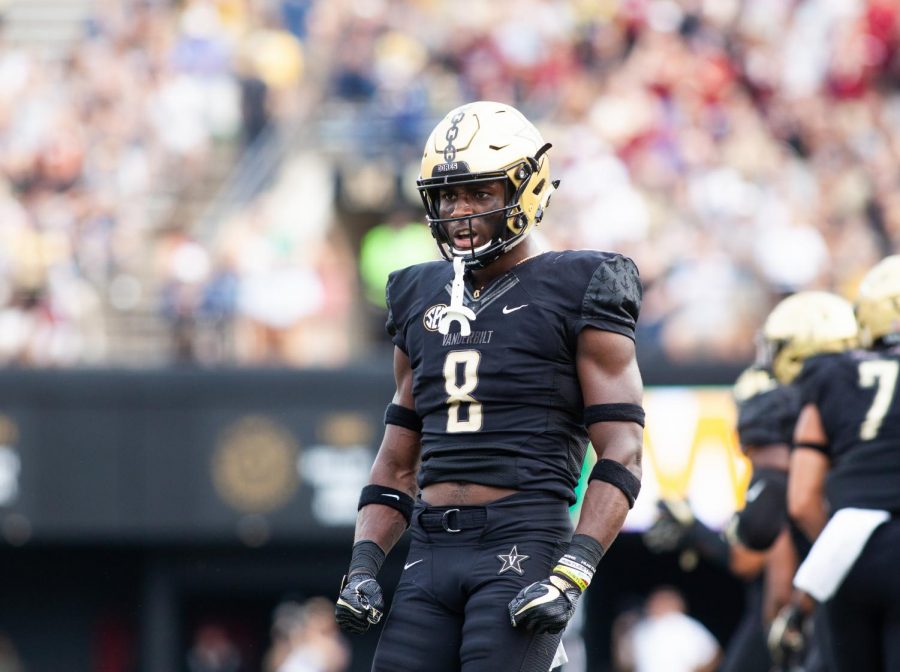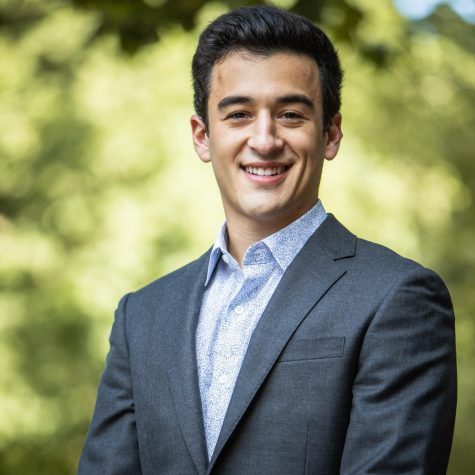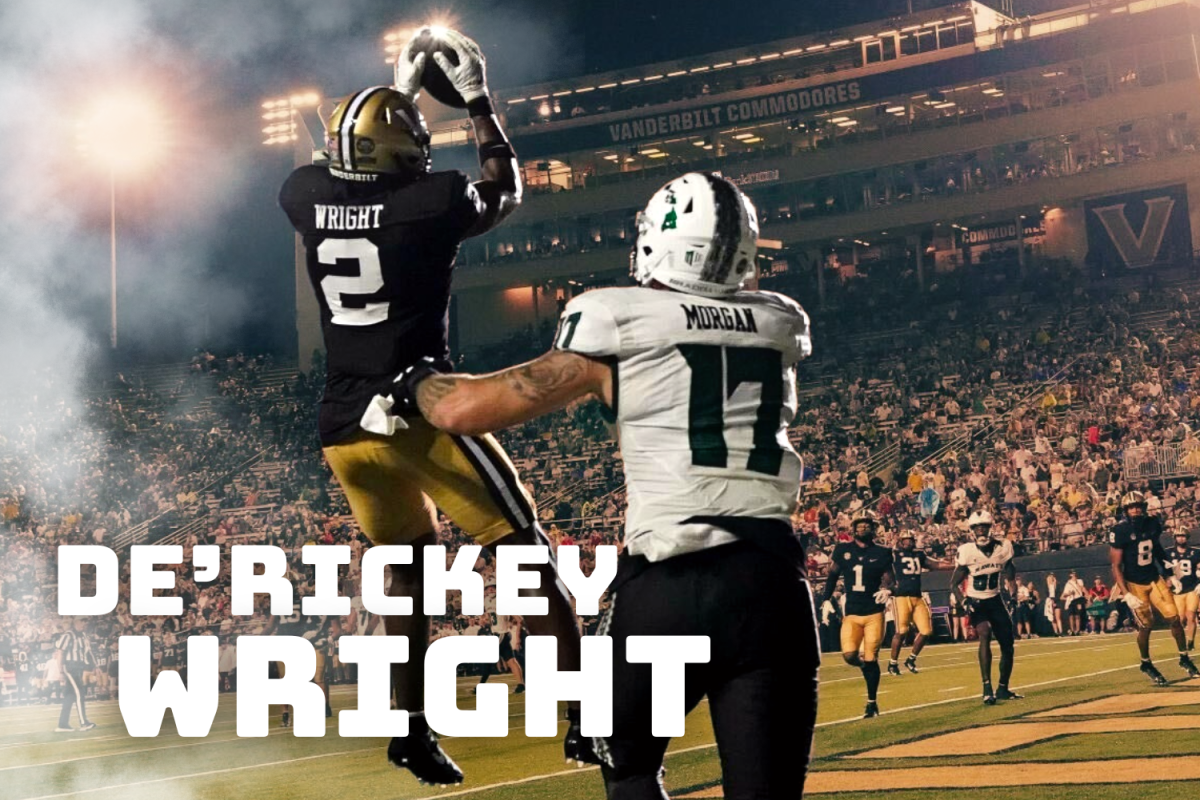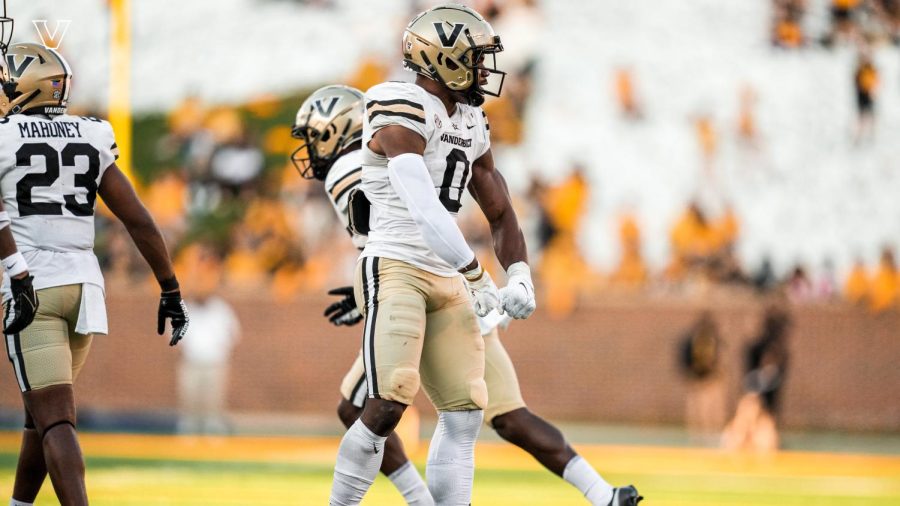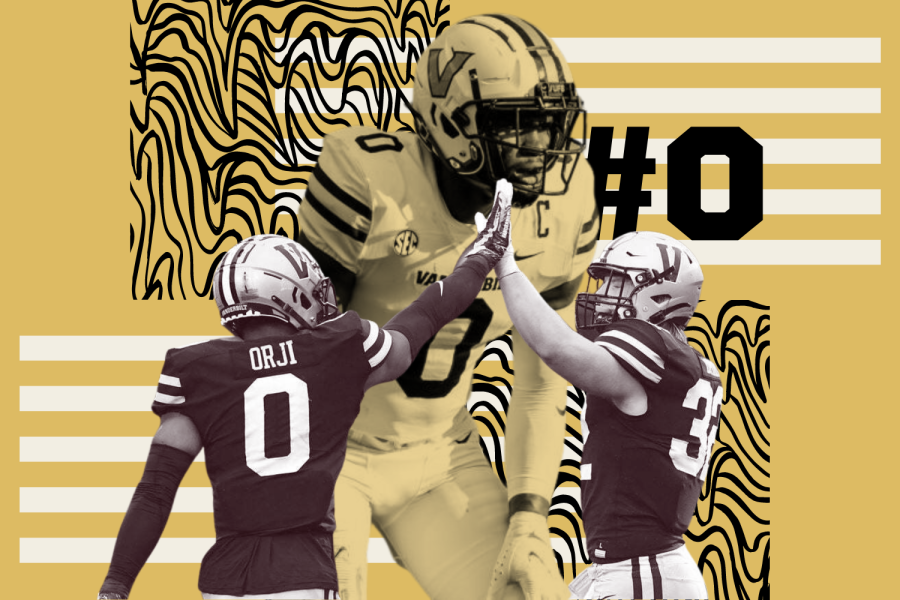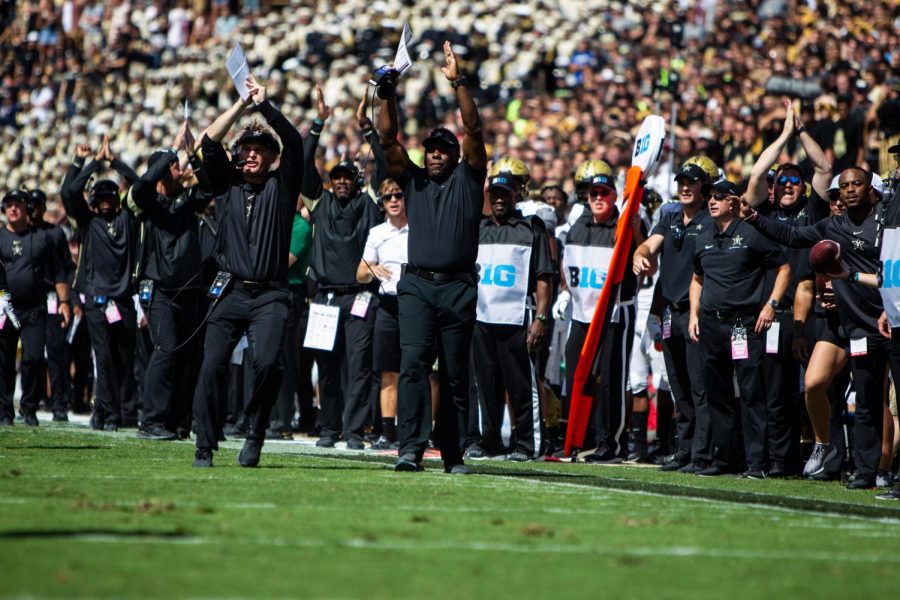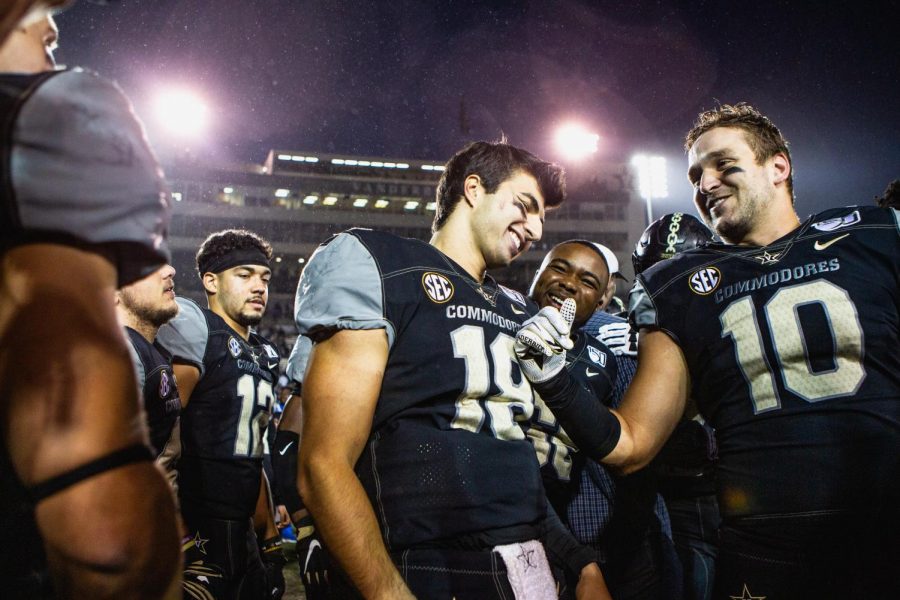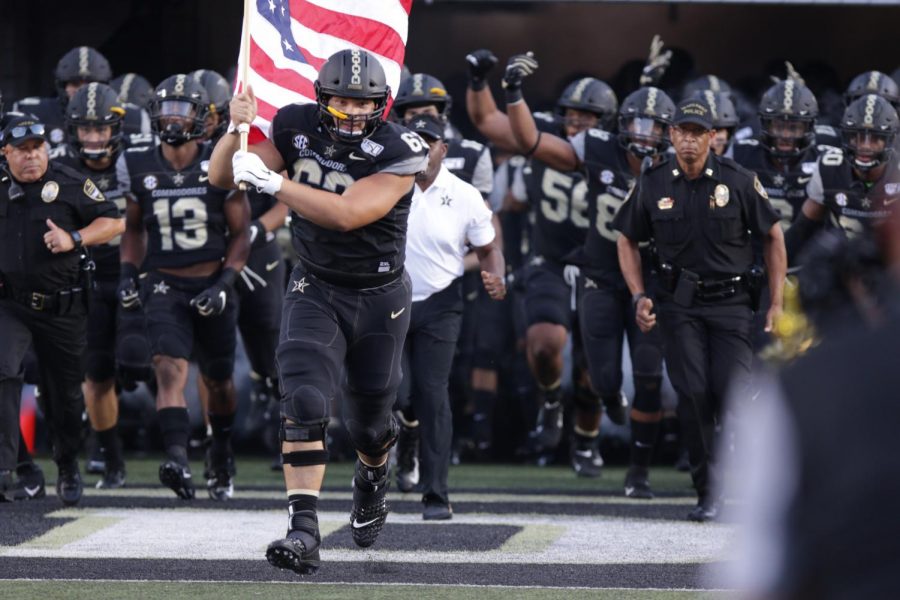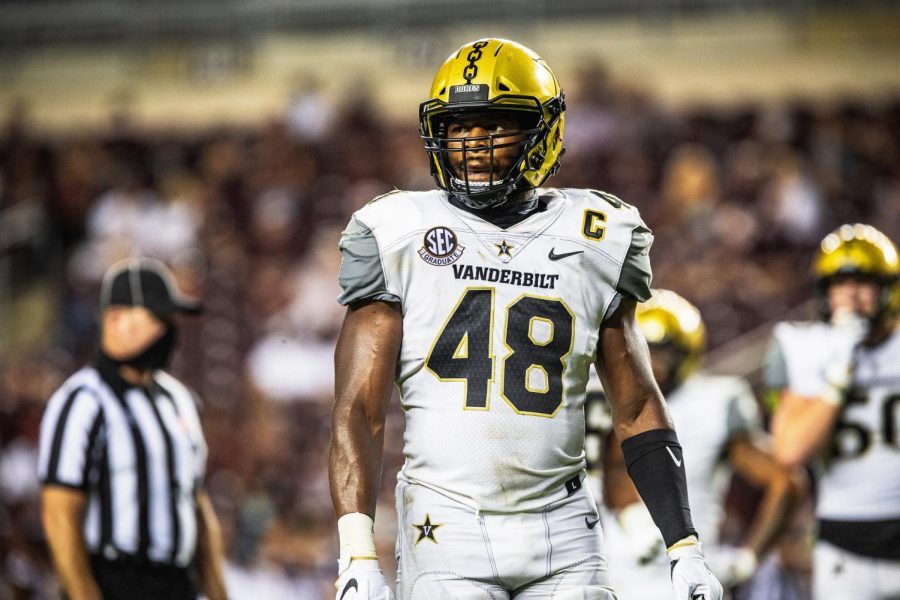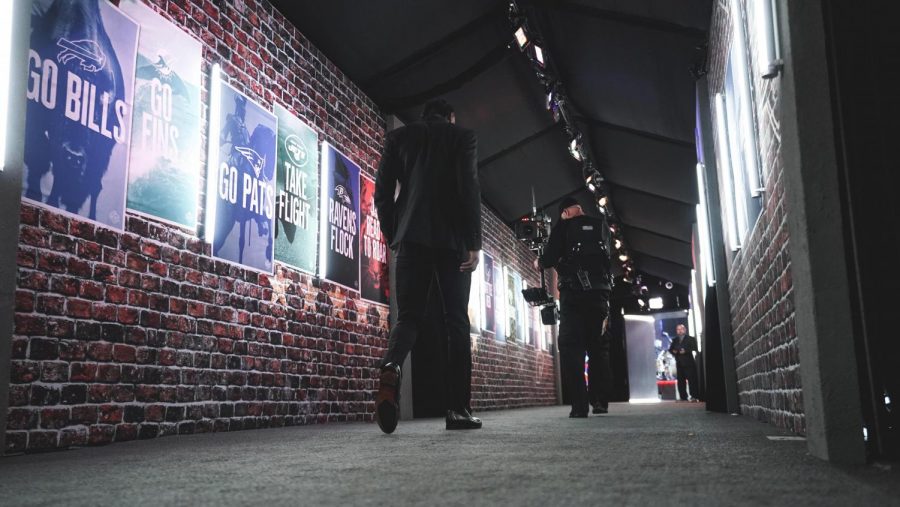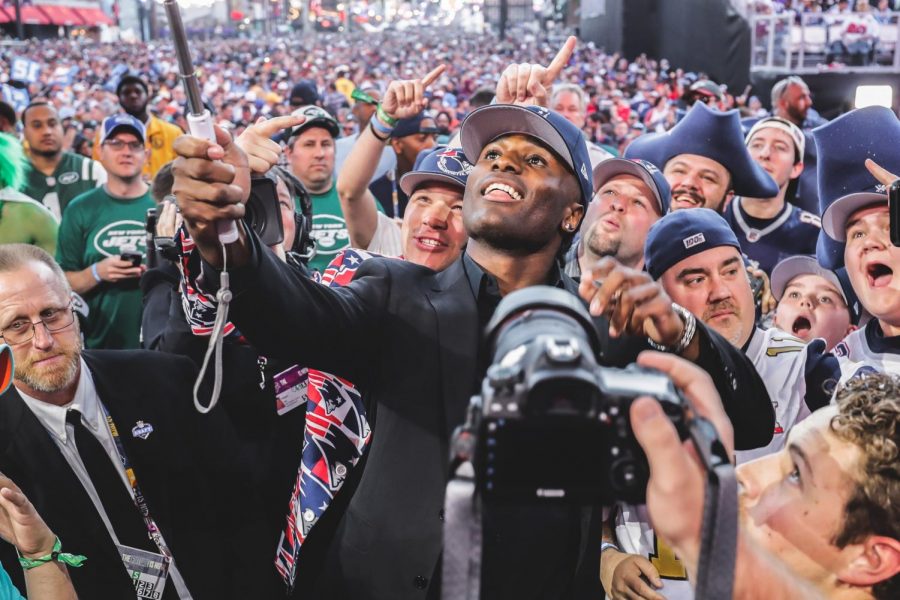Last December, Vanderbilt Commodore defensive back Joejuan Williams announced that he would forgo his senior season and declare for the 2019 NFL Draft.
Williams has excelled in his three years on West End; from starting at cornerback for the past two seasons, to giving opposing quarterbacks nightmares, he has proven his worth as an integral piece of the Commodore defense. In a week, the 2019 NFL Draft will commence–fittingly on Broadway in Downtown Nashville, just a few miles away from the his home.
As Williams prepares to turn the page on a new chapter, The Vanderbilt Hustler is here to provide some insight on his draft stock, what he can bring to an NFL team, and who Head Coach Derek Mason sees as his NFL counterpart.
By the numbers:
- 18 passes defended, 1st in SEC (2018)
- 14 pass breakups, 1st in SEC (2018)
- 4 interceptions, 1st in SEC for a CB (2018)
- 44 solo tackles, 1st in SEC for a CB (2018)
- 119 total tackles, 30 passes defended in his three-season career
- Associated Press 2nd team All-SEC DB (2018)
- Coaches 2nd Team All-SEC DB (2018)
Measurables:
- Height: 6′ 4″
At 6′ 4″, Williams easily solidifies himself as the tallest cornerback prospect in the 2019 NFL Draft. His immense length provides an advantage that could be suitable for many defensive schemes, as Williams can match up with some of the top receivers in the league. In 2018, only three of the top 10 NFL receivers in receiving yards were shorter than 6′ 1″–Tyreek Hill, Antonio Brown, and T.Y. Hilton–revealing a new, taller specimen of NFL wide receivers. Fittingly, the model cornerback has shifted in accordance: that same season, only four of the top ten NFL defensive backs in pass breakups were below 6′ 0″. Williams should have little trouble against even the tallest of matchups.
- Weight: 211 lbs.
Williams’ weight, much like his height, sets him apart from the pack. His 211 pound weigh-in is good for third among cornerbacks in the 2019 draft pool, and just two pounds behind first place. This immense size goes hand-in-hand with his ability to physically dominate opposing receivers, pushing them off the line of scrimmage once the ball is snapped. However, his size raises concerns about speed and agility for some scouts.
- 40-Yard Dash: 4.64 seconds (NFL Combine), 4.55 seconds (Vanderbilt Pro Day)
This was the dagger for Williams–or so it seemed. At the 2019 Draft Combine, he put up an subpar 4.64 forty time, confirming the skepticism of NFL scouts. Entering the combine, Williams was a projected late first round pick, but after his slow time, his stock plummeted as low as the sixth round in some mock drafts. But again, we’re looking at a former Vanderbilt Commodore; to say he’s accustomed to being overlooked would be an understatement. He responded by making the trip back home for Vanderbilt’s pro-day, where he put up a much improved 4.55 second time. 4.55 seconds is the average time posted by defensive backs since 2003, which silenced critics and revealed that he has the speed to keep up.
Impact at Vanderbilt
When Williams first packed his bags for West End, he was a year removed from playing football. After attempting to transfer high schools as a senior, the state high school association denied his hardship case. He was suspended from high school football for an entire year.
His senior season was stripped from him, but he did nothing to deserve such a punishment.
That didn’t stop the highly-touted four-star recruit from making an immediate impact in college, as Williams was one of just six true freshmen to see the field for the Commodores in 2016. Even then, Williams was hardly a role player–he appeared in all 13 games, rounding out Vanderbilt’s cornerback trifecta alongside Tre Herndon and Torren McGaster. As the season progressed, he only got better. Williams ended the season on a high note, racking up three solo tackles and a tackle for loss against NC State in the Camping World Independence Bowl.
Since then, Williams hasn’t looked back.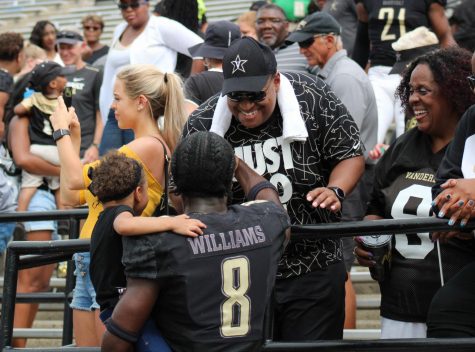
In his second year, Vanderbilt’s cornerback rotation shrunk from three to two after McGaster’s graduation. Williams was frequently matched up with the opponent’s top-target, and ended the season outperforming Herndon, a former teammate and current Jacksonville Jaguar.
In his third and final year, Williams went from an elite Vanderbilt cornerback to a nationwide talent, as he continued to turn heads heads with 61 total tackles, 18 passes defended, and four interceptions.
Williams, a Nashville native, could’ve played at some of the most storied programs in the country: LSU, Alabama, Auburn, Georgia, Penn State, Notre Dame, Ohio State, Michigan State, Michigan–the list goes on.
But ultimately, he decided to stay home. That choice, according to his coach, was the best one he could have made. Opting to put his home town on the map speaks to his personality, and the results have been astounding.
“He could’ve gone anywhere,” said Mason. “But he decided to stay home. The results were pretty incredible. When I looked at his play count last year, I was shocked. The dude played like 916 snaps. Now I look at his career totals, and I see that he has played close to 2700 snaps in his career here at Vanderbilt University. He wouldn’t have been given that opportunity anywhere else, and he proved that he deserved every one of those snaps…We’re talking about a guy that didn’t play high school football as a senior, and didn’t return for his senior year. Despite that two year discrepancy, he’s one of the most prepared prospects in this draft. Period.”
What Sets Him Apart?
In interviews with The Vanderbilt Hustler, Mason and Defensive Coordinator Jason Tarver made one thing abundantly clear: Williams is the prototype NFL prospect, both mentally and physically.
“Coach Mason talks about relentless, tough, and intelligent? That’s exactly who he is,” Tarver said with passion. “If someone beats him? Oh, he’ll get up. He’ll get up immediately. That’s relentless. He has the drive to succeed. Better yet, he’ll rub some dirt on it and say, ‘do that again, let’s go. You won’t beat me again.’ that’s tough. It extends to practices and games. Being competitive is one of the major factors of success in the NFL, and he’s got that. And above all, he’s intelligent. He makes all the calls in the defense. From a corner position, that’s rare.”
Williams has all the intangibles necessary to succeed in the NFL. He has the competitive drive, the toughness, and most importantly, the Vanderbilt difference: unrivaled intelligence. Additionally, the coaches asserted that his size makes him an extremely rare talent.
“You know, from a physical standpoint, Joejuan is a once in a decade player for a defensive coach,” said Mason. “Joejuan Williams is going to be a first-day take in my opinion, 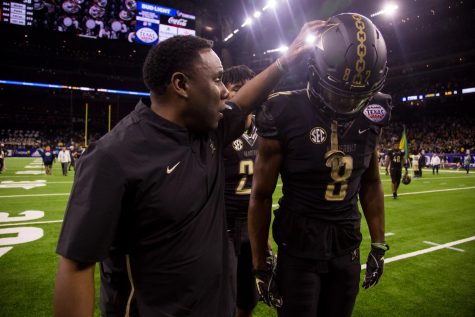 just based on the simple fact that he’s fast enough, he’s long enough, and he’s competitive enough.”
just based on the simple fact that he’s fast enough, he’s long enough, and he’s competitive enough.”
Tarver’s two cents paralleled Mason’s. It’s almost impossible to find a player with such great size and the ability to move like a receiver.
“Joejuan knows who he is. And all taller, longer corners must know who they are to succeed,” Tarver said. “They have to use their height and their length to get people on the line of scrimmage, and to take speed off of them. He knows how to do that. He’s tall, but he can still bend, and for taller corners in the NFL that has to happen.”
As the coaches continued to sing his praises, Mason began to make a bold comparison.
“When you look at those types of players that have surreal length and athleticism, your list will be short. Extremely short. When I said ‘one in the past decade’, I truly meant that I’ve only seen one other like him in the past decade. You know where I’m going with this.”
NFL Comparison: Richard Sherman
If you couldn’t tell where Mason was going, consider his three-year stint at Stanford. He served a number of coaching positions on the defensive side, focusing specifically on cornerbacks. His most successful product flew under the radar. Mason saw his unique size and recognized his competitive spirit on the inside. This former fifth-round pick, after Mason spoke so highly him, went on to make four pro bowls, three First-Team All Pro rosters, one Second-Team All-Pro roster, and above all, win a Super Bowl.
That fifth-round pick was Richard Sherman.
“When I got to Stanford in 2010, I got the chance to work with Sherman and now I’m working with Joejuan Williams,” Mason said. “I can say from experience, they both have the same hunger, they both have the same propensity to play the game, and they both have the same build. They may get overlooked, but that’s a mistake. These dudes can ball and can compete with anyone.”
It may seem like a crazy comparison to make, but upon closer examination, the two aren’t so different after all. First, let’s compare them physically–the graph below illustrates how they shape up to the other corners in their respective draft pools.
Stay tuned to @VUHustlerSports for updates on Williams’ draft status and live coverage from the 2019 NFL Draft.


